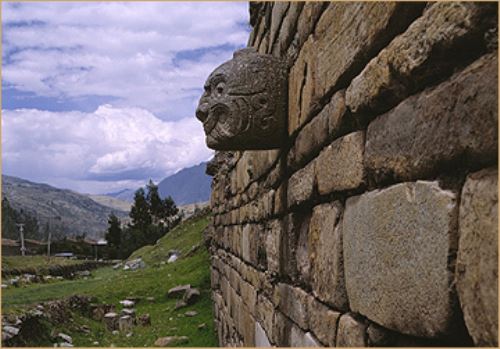The one of a kind, impressive geography and the archaeological-cultural richness present in its provinces make Ancash region a must-visit destination to celebrate New Year near Lima.
If a lovely Andean landscape is what you are looking for, Callejon de Huaylas (Alley of Huaylas) is the place to go. Colossal snow-capped mountains, trails surrounded by eucalyptus and covered with broom flowers are some of the treasures travelers can explore while in this alley guarded by Huascaran peak (6,768 meters a.s.l.).
The Huascaran National Park extends across 340,000 hectares in several provinces: Huaylas, Yungay, Carhuaz, Huaraz, Recuay, Bolognesi, Huari, Asuncion, Mariscal Luzuriaga and Pomabamba.
It is one of the most iconic parks in the country and protects one of the areas with the largest biological and cultural diversity in Peru.
This protected natural area is located within a tropical zone, and the highest snow-capped mountains in the region are found here.
The geographical features inside the park include 660 tropical glaciers and 300 glacial lakes. Hence its importance when it comes to hydrological potential, as its peaks feed the basin formed by rivers Santa, Marañon and Pativilca.
The pristine landscape is impressive and is the key attraction of the park. The well preserved ecosystems constitute the driver of the local economy rebound.
Other destinations that should be on the list include Acopalca, Maria Jiray waterfall, lakes Purhuay and Reparin, located in the province of Carlos Fermin Fitzcarrald-San Luis. The Pomallucay sanctuary is also open for tourists.
Those visiting Asuncion-Chacas province will discover a beautiful city, and inside, the Mama Ashu sanctuary, a museum and a cooperative business of exports, mainly of wood products.
The extraordinary Cañon del Pato (Duck Canyon) is located 25 km north of Caraz. It is formed by Santa river that flows through Callejon de Huaylas, where the north end of the Cordillera Negra range converges with the Cordillera Blanca mountain range.
Archaeological sites
Ancash also provides destinations to know the heritage from ancient Peruvians, as is the case of the Chavin de Huantar Archaeological Monument and the National Chavin Museum, located in Huari province.
Built with huge stone blocks, the construction dates back to 1200 B.C. and was discovered by Julio C. Tello in 1919. It was included in the Unesco’s World Heritage List in 1985.

The complex includes ceremonial facilities and pyramidal structures. The Templo Viejo (Old Temple) houses a series of underground galleries that lead to the Chavin Lanzon room, where lies the enigmatic knife-shaped stone sculpture.
The museum houses a varied collection of ceramic and stone pieces from Chavin culture.
Sechin and Max Uhle museum
Casma province is home to the Sechin archaeological site, a mud brick ceremonial center from Sechin culture (1800 B.C.-800 B.C.).
The museum presents information on the principal pre-Hispanic cultures that settled in the region, such as Moche, Wari, Chimu, Casma e Inca.
Beaches
Furthermore, Ancash features 40 beaches that attract thousands of vacationers during the summer, especially for New Year: Tortugas, Tuquillo, Las Pocitas, Tamborero, La Gramita, Bermejo, Vesique, Punta Patillos, among others.
(END) LZD/MAO/RMB
Published: 12/29/2016